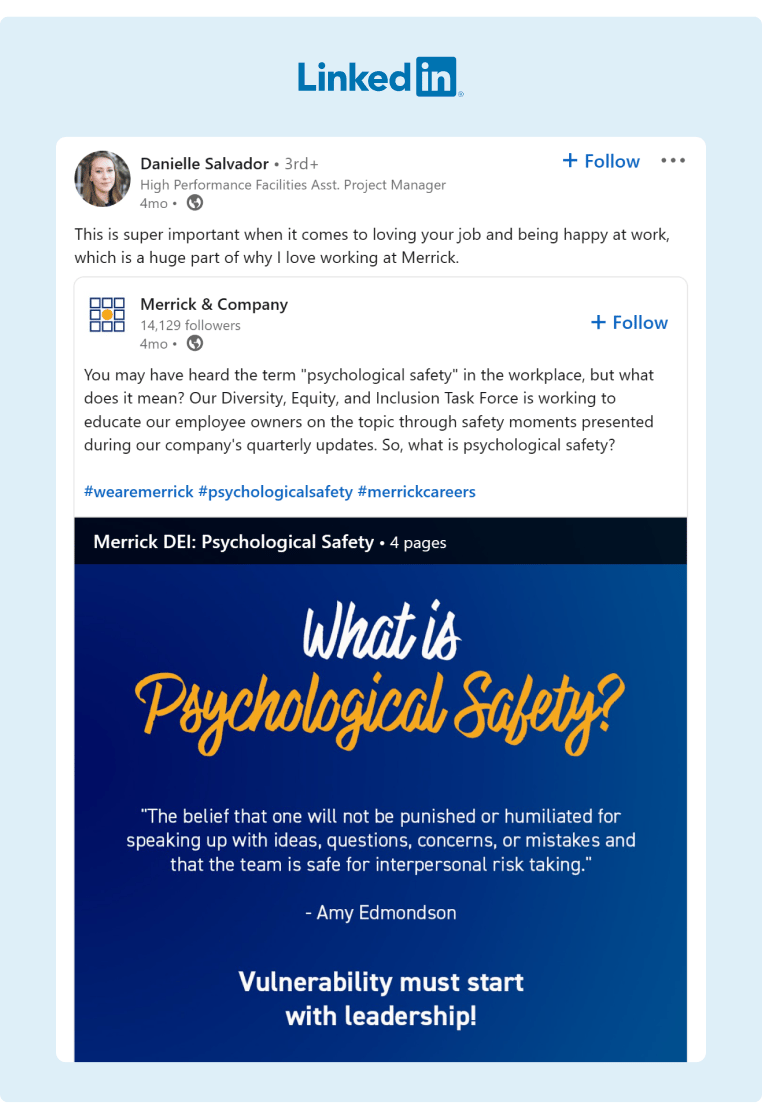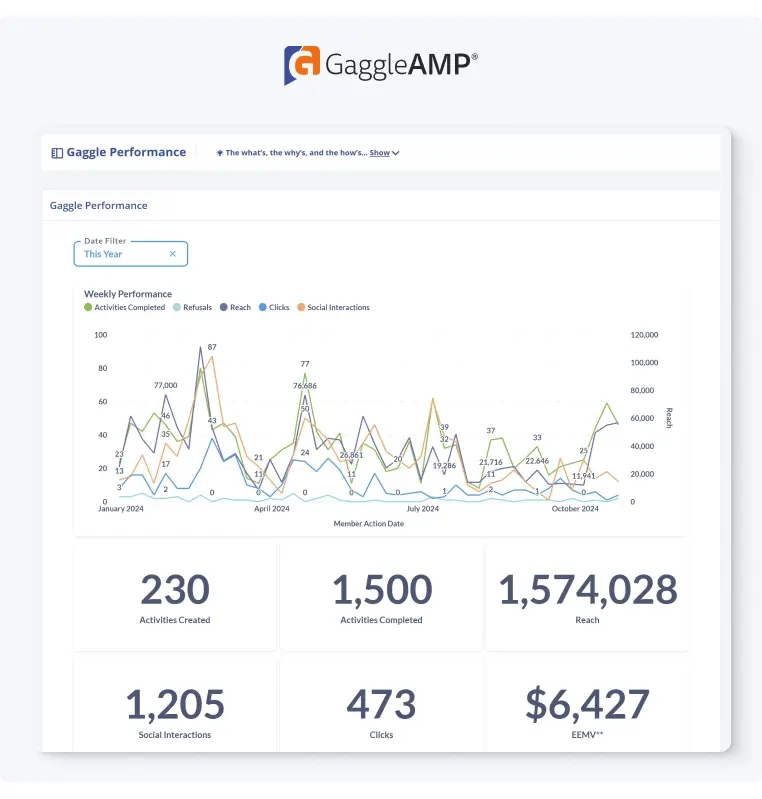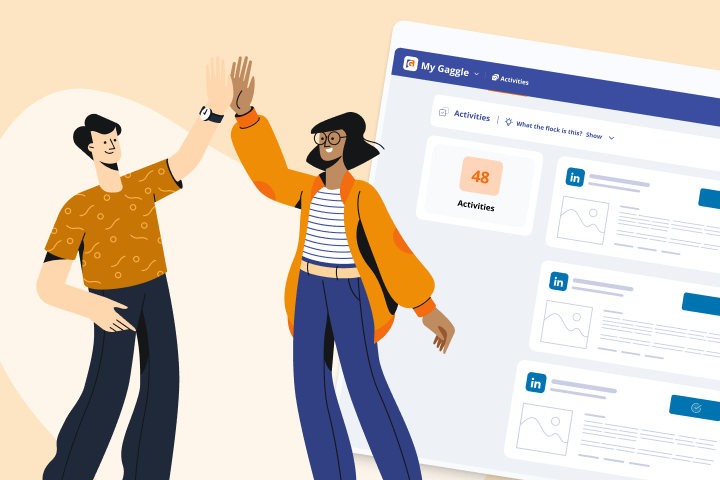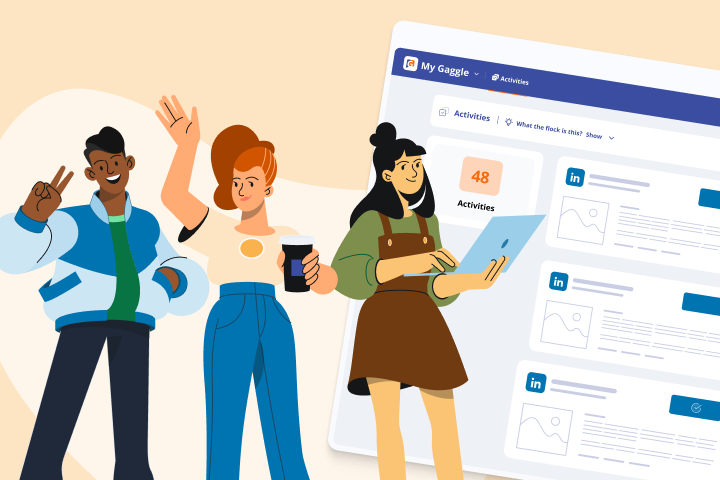Employee Engagement and Retention Strategies That Actually Work
This isn’t How to Lose a Team in 10 Days. Let’s fix that.
When employees walk out the door, they don’t just take their skills—they take institutional knowledge, productivity, and culture with them. Employee turnover is expensive, both in dollars and in morale. For marketing leaders already stretched thin, keeping talent engaged and loyal can feel like trying to plug a leaky bucket with duct tape.
And here’s the kicker: most employees don’t leave because of money. Pew Research reported in 2024 that only 30% of workers are satisfied with their pay—but even fewer (26%) are happy with promotion opportunities. In contrast, relationships with coworkers and managers scored far higher, reinforcing that connection and recognition are what truly drive satisfaction and loyalty.
In today’s hybrid world, employee engagement isn’t a nice-to-have. It’s the backbone of retention. A disengaged team erodes productivity and morale, while an engaged one drives innovation, advocacy, and loyalty.
In this blog, we’ll explore actionable strategies to keep your top talent motivated and engaged—starting with why this matters more than ever.
What is Employee Engagement and Retention?
Employee engagement refers to the emotional commitment an employee has to their work and their company. It’s about more than job satisfaction—it’s about purpose, ownership, and enthusiasm for the mission. It reflects how invested an employee is in contributing to the company’s success.
Employee retention is your ability to keep top performers from leaving. The two are deeply intertwined: engaged employees are more likely to stay, and those who feel stagnant or undervalued are more likely to leave.
Think of it this way: people don’t quit jobs—they quit environments. A toxic or disengaging culture pushes people out, while an empowering one draws them in.
When employees feel disconnected, undervalued, or silenced, it doesn’t just hurt morale—it chips away at your entire culture. Toxic environments don't form overnight; they emerge from prolonged neglect of engagement fundamentals like trust, recognition, and communication. But here's the flip side: just as disengagement compounds negativity, engagement creates a ripple effect of positivity. When people feel seen, supported, and aligned with the company mission, they don’t just stick around—they show up with energy, creativity, and commitment.
The benefits of an engaged workforce ripple across every part of the organization:
-
Higher productivity: Engaged employees are more focused, take fewer sick days, and bring more energy to their roles.
-
Stronger brand advocacy: Employees who believe in the company are more likely to represent it proudly online and in real-life conversations.
-
Better customer experiences: When employees are happy, customers feel it. Enthusiastic employees deliver better service.
-
Increased loyalty and morale: Engaged employees feel ownership over their work. This drives commitment, resilience, and a positive work culture.
Why Employee Engagement and Retention Are Non-Negotiable in Today’s Workplace
Engagement and retention aren’t just HR buzzwords—they’re vital metrics that shape your organization’s performance and stability. According to Gallup, highly engaged teams show 21% greater profitability and 59% less turnover. Yet disengagement still costs U.S. companies up to $550 billion annually.
When employees are engaged, they show up with purpose. They’re more likely to stay, contribute meaningfully, and advocate for your brand.

Understanding this begins with the employee journey—from onboarding to exit. Each stage is a chance to create connection or risk losing it. The stronger the engagement throughout, the more likely your people are to stick around.
How Engagement Impacts Retention (with Data)
Here’s the reality: Gallup reports that 70% of the variance in employee engagement is directly attributable to managers. And disengaged employees are nearly three times more likely to be actively seeking other opportunities, according to Lumapps.
In the world of B2B marketing, this means your content visibility, pipeline, and brand reach are all impacted by disengaged teams.
Take this example: Dynatrace, a global B2B tech company, implemented GaggleAMP as part of their employee engagement and advocacy strategy. Within a short period, they saw a 10x increase in social media engagement—a direct result of empowering their employees to share content and amplify their brand on LinkedIn.
But the impact didn’t stop there. Dynatrace reported improved employee perception, stronger team cohesion, and elevated internal morale. Their leadership team even noted a positive influence on employee retention and motivation, proving that advocacy can do more than boost brand awareness—it can transform culture from the inside out.
Engagement drives belonging. Belonging drives retention.
Top Employee Engagement Strategies That Drive Retention
To reduce attrition and build a motivated workforce, you need strategies that are practical, proven, and people-first. These aren’t checkboxes on a to-do list—they’re culture-shaping tools that build loyalty and connection across departments.

These strategies will help you energize employees, align them with your mission, and make them want to stay.
Empower Meaningful Work
People want to know that what they do matters. Employees feel more connected when they understand how their work contributes to company-wide goals. This means linking daily tasks to the broader mission and celebrating the impact they create.
-
Align roles with strategic goals.
-
Clearly communicate the “why” behind projects and campaigns.
-
Involve employees in planning and decision-making to foster ownership.
GaggleAMP Tip: Let employees become brand advocates. Advocacy roles give them visibility and meaning beyond their job description. They feel like strategic partners, not just task-doers.
Recognition and Reward Systems
A culture of appreciation fuels motivation. Recognition—whether verbal, written, or public—boosts morale and reinforces desired behaviors. Employees want to feel seen for their efforts, not just their outcomes.
-
Use tools like Slack shoutouts or GaggleAMP for quarterly awards and leadership-driven recognition.
-
Tailor rewards to employee preferences—some may value gift cards, others may prefer public praise or extra time off.
-
Make recognition timely and specific to maximize impact.
GaggleAMP Example: Leaderboards and badges within the platform highlight contributors and incentivize participation. These gamified features transform everyday actions into moments of achievement.
Career Growth & Internal Mobility
When employees don’t see a path forward, they start looking elsewhere. Growth doesn’t always mean promotion—it could mean learning a new skill, taking on a leadership role in a project, or gaining visibility through advocacy.
-
Offer mentorship programs and professional development stipends.
-
Create clear career paths and communicate progress expectations.
-
Encourage cross-functional collaboration to expose employees to new challenges.
Advocacy plays a powerful role here. Employees who regularly engage on platforms like LinkedIn often develop stronger professional networks and confidence, creating internal “mini thought leaders.”
Open Communication & Feedback Loops
Feedback is foundational to engagement. Employees want to be heard and to know that their input matters. Consistent, two-way communication builds trust, alignment, and morale.
-
Conduct quarterly engagement surveys.
-
Encourage regular 1:1s and team check-ins where feedback flows both ways.
-
Promote leadership transparency through town halls and open Q&As.
The goal is to create a culture where communication isn’t top-down—it’s collaborative and empowering.
Trust fuels retention.
And once trust is built through communication and recognition, your engagement strategy becomes a living system—not a static initiative.
Reflecting on these strategies, it becomes clear that employee engagement is not a one-size-fits-all solution. Instead, it’s a continuous investment in understanding, enabling, and celebrating your people. These efforts don’t just improve morale—they drive loyalty and long-term commitment.
Improving Retention by Designing Better Engagement Programs
Strategic engagement programs must be measurable, adaptable, and aligned with retention goals. Otherwise, you’re just guessing. That’s why moving from intention to execution requires more than good vibes and one-off initiatives. Engagement has to be treated like any other performance driver—with clear metrics, accountability, and regular optimization.

If you want to improve retention, you need a repeatable system that monitors what’s working, identifies what’s not, and adapts in real time. One of the most effective ways to do this? Implement a monthly “Engagement-to-Retention” review cycle that brings clarity and structure to your strategy.
How to Build a Monthly Engagement-to-Retention Review Cycle
-
Measure participation: Track employee involvement in advocacy efforts, recognition programs, and professional development. Use tools to monitor engagement metrics.
-
Track retention and turnover: Analyze who’s leaving, why they’re leaving, and how that correlates with their engagement scores or team participation.
-
Compare trends across departments: Identify teams with high or low retention. What’s working for one that’s missing in another?
-
Iterate and improve: Use findings to refine your engagement programs, content cadence, communication channels, or training.
-
Celebrate and share wins: Promote departments or employees who drive high engagement. Recognition reinforces desired outcomes across the company.
Dashboards and scorecards help make these insights visible and actionable. They allow HR and Marketing to connect qualitative sentiment with hard data.
This data-driven approach not only helps prove ROI—it ensures your programs stay relevant and impactful.
The Role of Employee Advocacy in Boosting Engagement & Retention
When employees represent your brand publicly, they feel more invested in its success. Advocacy boosts visibility, but it also boosts morale.
Many GaggleAMP customers have shared that employee advocacy doesn’t just boost visibility—it strengthens internal connection. Why? Because advocacy creates connection. It gives employees a voice and a platform.
When teams start actively sharing content and thought leadership on LinkedIn, they shift from being passive observers to active brand ambassadors. That change drives engagement—and keeps people invested in your culture.
GaggleAMP Helps You Engage and Retain Your Best Talent
GaggleAMP is a powerful employee advocacy and engagement platform built specifically for B2B teams. It helps marketers, HR leaders, and communicators activate employees as brand advocates—without disrupting their workflows.
What makes GaggleAMP stand out?
-
It integrates where your team already works: Slack, Microsoft Teams, and many more core platforms.
-
It requires minimal time investment: You don’t need hours of oversight—GaggleAMP is built for busy teams that want big impact without the heavy lift.
-
It uses gamification to drive participation: Leaderboards, badges, and incentives foster healthy competition.
-
It provides clear ROI reporting: Track content performance, employee participation, and even conversions tied to advocacy efforts.
These standout capabilities aren’t just features—they’re force multipliers. When implemented together, they transform employee advocacy from a manual chore into an engaging, measurable program that aligns with real business goals. And companies aren’t just adopting it—they’re seeing real results. Just look at what happened when Ricoh put GaggleAMP to work.
Ricoh, a global technology company, used GaggleAMP to streamline their employee advocacy efforts. In just 90 days, they saw a 3x increase in social engagement and reported measurable improvements in employee morale and internal communications—all by automating content prompts and recognizing top contributors.
Whether you're trying to improve reach, prove social ROI, or boost internal morale, GaggleAMP helps you do it efficiently and effectively.
Want to Keep Top Talent? Make Advocacy Part of Their Journey
Retention doesn’t begin with a platform—it begins with people. The most effective employee advocacy programs are rooted in trust, empowerment, and a clear sense of purpose. When you position advocacy as a career-building opportunity rather than a marketing task, you create an ecosystem where engagement fuels loyalty.
Start small: identify five high-potential employees and invite them to be advocacy champions. Make it easy for them to participate—and even easier to shine.
Audit your current engagement efforts. Which ones also support retention? Where can you close the gaps?
Schedule a demo to see how GaggleAMP makes employee engagement effortless and impactful.












